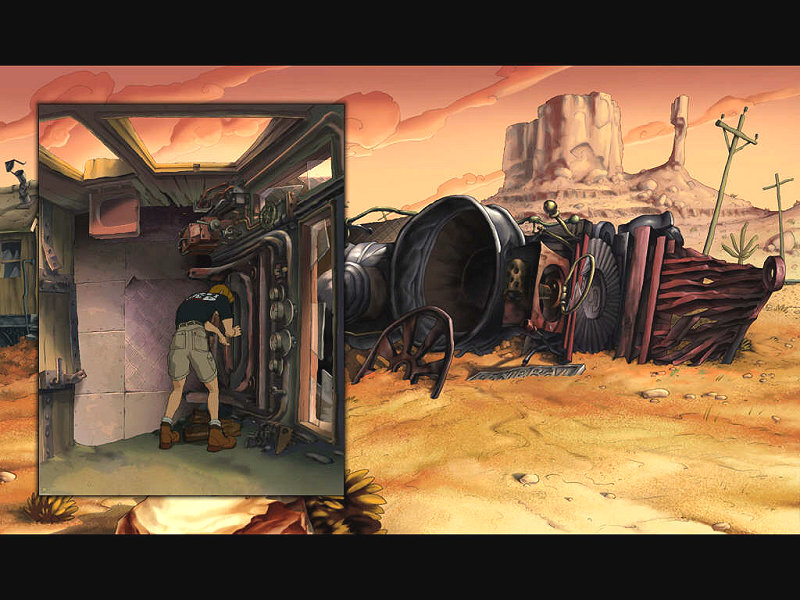Runaway Road Adventure Patch From Days
A history of American Adventures thanks to Colin Peake:In the 1970's the British Coal Board (who had now finished with the Shipley Mine on which the park now stands) with Derbyshire County Council set about creating a leisure park celebrating the Best of all things British, in 1985, Britannia Park opened with one pavilion (now Aztec Kingdom), an Arena, and a miniature train line, that served no real purpose, as the park was all condensed into one smallish area.The rest of the park could be politely described as a mud bath. The park shut it's gates for the last time just 20 weeks after opening, they'd run out of money.Derbyshire County Council began to look for a new owner, somebody who could redevelop the park into a success, John Rigby of Park Hall Leisure, the owner of Camelot stepped in, backed by Granada Media, who had set up their own park based around their TV studio's.
The new name for the park was The American Adventure, the concept being based around the legends of the American West, and would include rides, shows and other attractions. At the time, this was one of the first few fully themed parks in the UK, as even Alton Towers had yet to develop theming to any sort of scale. In many ways the concept was similar to the 'Corriganville' park which was located in California, and popular in the 1950s and early 1960s, although updated to include attractions designed for a 1980s audience.
Runaway Road Adventure Patch From Days 1


£8 million was invested in time for the park opening in June 1987, heralded as 'Britain's major new theme park'.Upon opening the ride selection included a powered runaway mine train and the two drop 'Cherokee Falls' log flume, both purchased from WGH Engineering. A second powered coaster was 'Buffalo Stampede', plus a pirate ship, wagon train Ferris wheel, balloon ride and plenty of other smaller rides.For 1989 four million pounds was spent on the creation of Spaceport USA and 'The Missile' roller coaster. This Vekoma Boomerang was the first true rollercoaster for the park, and was once voted the best in the UK in the days before Nemesis and Oblivion. It had originally operated for a season at the 1988 Glasgow Garden Festival and it is interesting to speculate whether it was a 'done deal' that it would move to The American Adventure the following year.In 1995 the Granada Group (who now owned the park outright) made their last investment into the park, bringing in a double Looping rollercoaster secondhand from Lightwater Valley to replace the Canyon Trip ride, which subsequently moved to Camelot. The 'new' rollercoaster has been known by many names here, including Gladiators, Iron Wolf, and Sky Looper. By now it was clear that the attention to detail made in the early years of the park was now absent and most of the new rides were either unthemed or out of place in their themed areas.It was therefore no surprise that in 1997 Granada announced they wished to pull out of the mainstream theme park industry by selling both the American Adventure and Camelot, but retaining it's TV themed attraction in Manchester (which subsequently closed).The American Adventure was sold to a new company called Ventureworld, headed by former Alton Towers developer John Broome.
Runaway Road Adventure Patch From Days Of Christmas
This heralded the start of a rather confused period for the park, with much uncertainty in the air. Rumours of new rides and re-themed areas abounded, but on the ground progress was slow. The park name was changed to American Adventure World from the start of the 1997 season, although almost every sign within the park still read The American Adventure!It was planned to change the name of the park to Adventure World from 1999, and some signs did in fact go up with the new name, but yet again, it wasn't to be. It was announced that John Broome had left the park and it was to return to being called The American Adventure.The park was now owned by the THG Group, who also own Pontin's and Leisure Parcs, operators of Blackpool's Tower, Winter Gardens and Piers.One saddening fact of the years since Granada became uninterested in the park is that a lot of smaller rides vanished, and huge parts of the park were shut off to the general public. This continued under new ownership, and the cracks really did start to appear once the park entrance was moved from it's old location to a new one around the side of the site. The old entrance to the park was suffering from mining subsidence, so what was one of the most attractive areas of pleasant gardens and pathways was closed off from the 1998 season. The new entrance into the park is not a patch on the old one and the effect of walking down the steps from the entrance plaza and seeing the park unfold before you was lost.